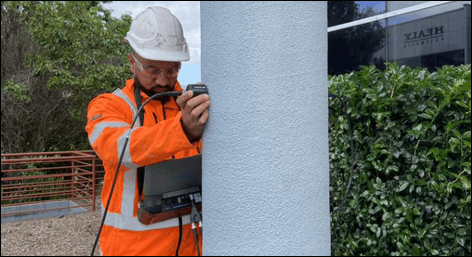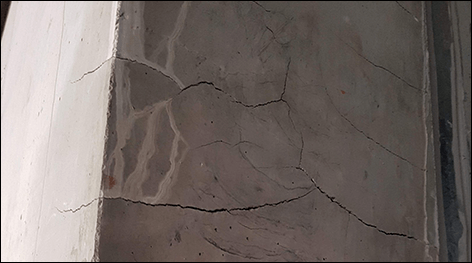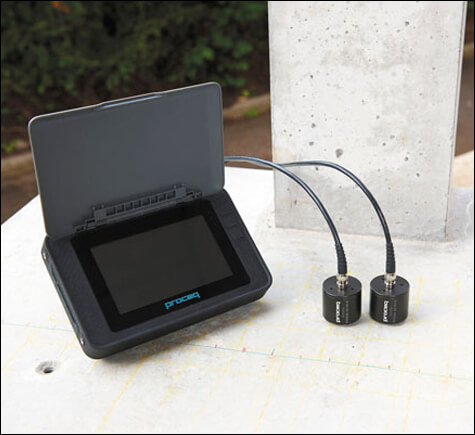
A common occurrence on active construction sites is the identification and remediation of defects. Regularly, destructive techniques are undertaken which can lead to costly delays from the testing process and subsequent repair of tested areas. To avoid extensive destructive testing, BCRC employs the use of non-destructive testing (NDT) techniques to understand the extent of defects or to identify their presence in areas of concern. A recent project that BCRC was involved with, examined the extent of cracking and presence of voiding within newly cast concrete walls and columns. A column exhibiting cracking is shown in the image below.

Ultrasonic pulse velocity (UPV) testing was undertaken to identify the presence of defects; as well as to quantify their extent. UPV testing is a method where transient waves are used to assess the in-situ condition of a material. Factors that affect the wave velocity include:
- Density
- Modulus of elasticity
- Material homogeneity
- Defects within the material (i.e. voiding, cracking)

Defects encountered during the wave travel path result in a lower velocity at the test point. By undertaking a comparative analysis between known sound areas and the test area, areas of concern are identified. To allow for the development of a suitable repair methodology, testing needs to identify the areas that required remediation. To ensure that repairs are effective, retesting of the repaired areas is recommended. This approach allows the asset owner to have confidence in knowing the extent of defective concrete has been identified as well as in the soundness of the repaired works that are undertaken.


